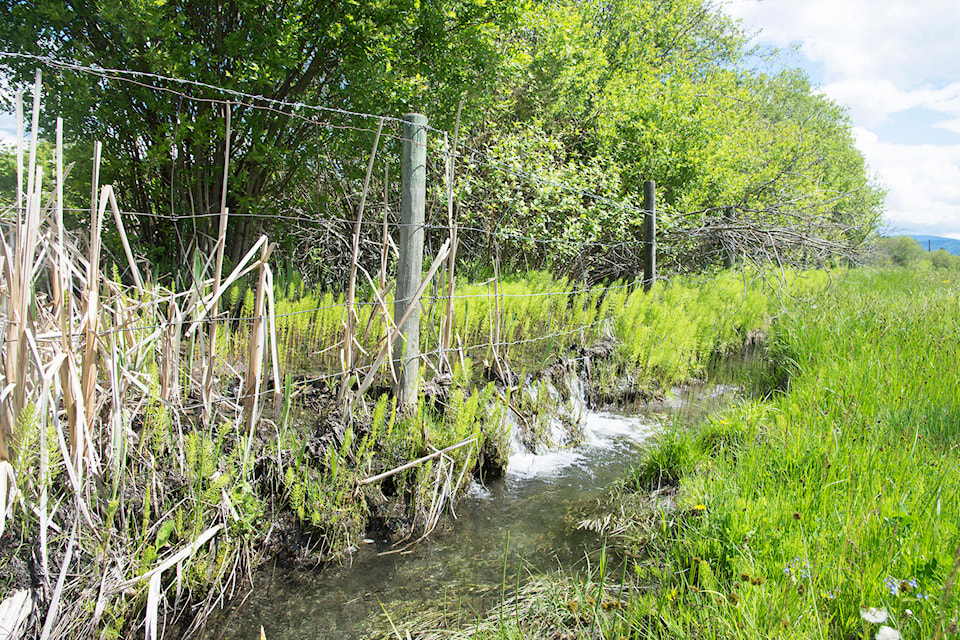A Notch Hill resident was leading the way on voicing concerns about the effects on water quality a large pile of railway ties could have.
The pile of creosote-treated railway ties, stored across the tracks from a low-lying wetland area, had Paul Poirier questioning the possible negative impact on water quality there.
Poirier isn’t the only one unsure of the safety of the tie storage; a petition which he said he collected over the course of a few hours at the Davies Road rail crossing, received more than 60 signatures.
Poirier’s petition asks to address the long-term storage of railroad ties in the area and move towards the use of concrete ties rather than creosote-treated wood.
Poirier said part of the large pile of railroad ties stored within sight of his property was removed last year, but the rest sat there throughout the winter.
According to a CP Rail representative, the railway is staging scrap ties on its property in Notch Hill as part of their normal summer track programs. The representative said the ties would be removed from the site for disposal by winter.
Read More: Rider Express to add stops, daily trips servicing the Shuswap
Poirier was concerned about creosote’s reputation as a carcinogen, or cancer-causing substance, as well as the pile of ties’ proximity to Newsome Creek which runs alongside and, in some areas, through his property.
The International Agency for Research on Cancer classifies creosote derived from coal-tars as probably carcinogenic to humans. Research has shown it is cancer-causing in mice and some limited studies have shown a link between creosote exposure and skin cancer in humans.
A summary of independent research provided by a CP Rail representative states that creosote is strongly bonded to wooden ties and utility poles with no more than 15 percent of the total creosote leeching out of them.
Poirier said he is particularly concerned with the contents of water in the area because some of it has been leaving the ditch alongside the railway line and flowing under a fence and onto his property.
Read More: Shuswap Lake reaches new peak, could surpass 2018 level
Read More: Stolen elephant statue heads home after recovery by Salmon Arm RCMP
According to the CP representative, the railway maintains its culverts and ditches to allow for proper drainage, but Poirier said that hasn’t been the case on his property. He pointed out one spot where, during the high-stream flow in early June, water flowed out of the ditch and under the fence separating his property from the railroad tracks, saturating one of his fields before draining out through the culvert.
Poirier said the flooding of the field had been severe enough in previous years that a tractor became stuck in it, and he is also concerned about losing top soil off the land which is used for agriculture.
“We’re trying to use the land for its intended purpose. The land has been degraded significantly in recent years and that is ongoing,” said Grant Smith, the farmer who leases the flooding field from Poirier.
“I have tried diligently to rectify the problems, speaking to deaf ears,” Poirier added.
jim.elliot@saobserver.net
Like us on Facebook and follow us on Twitter
